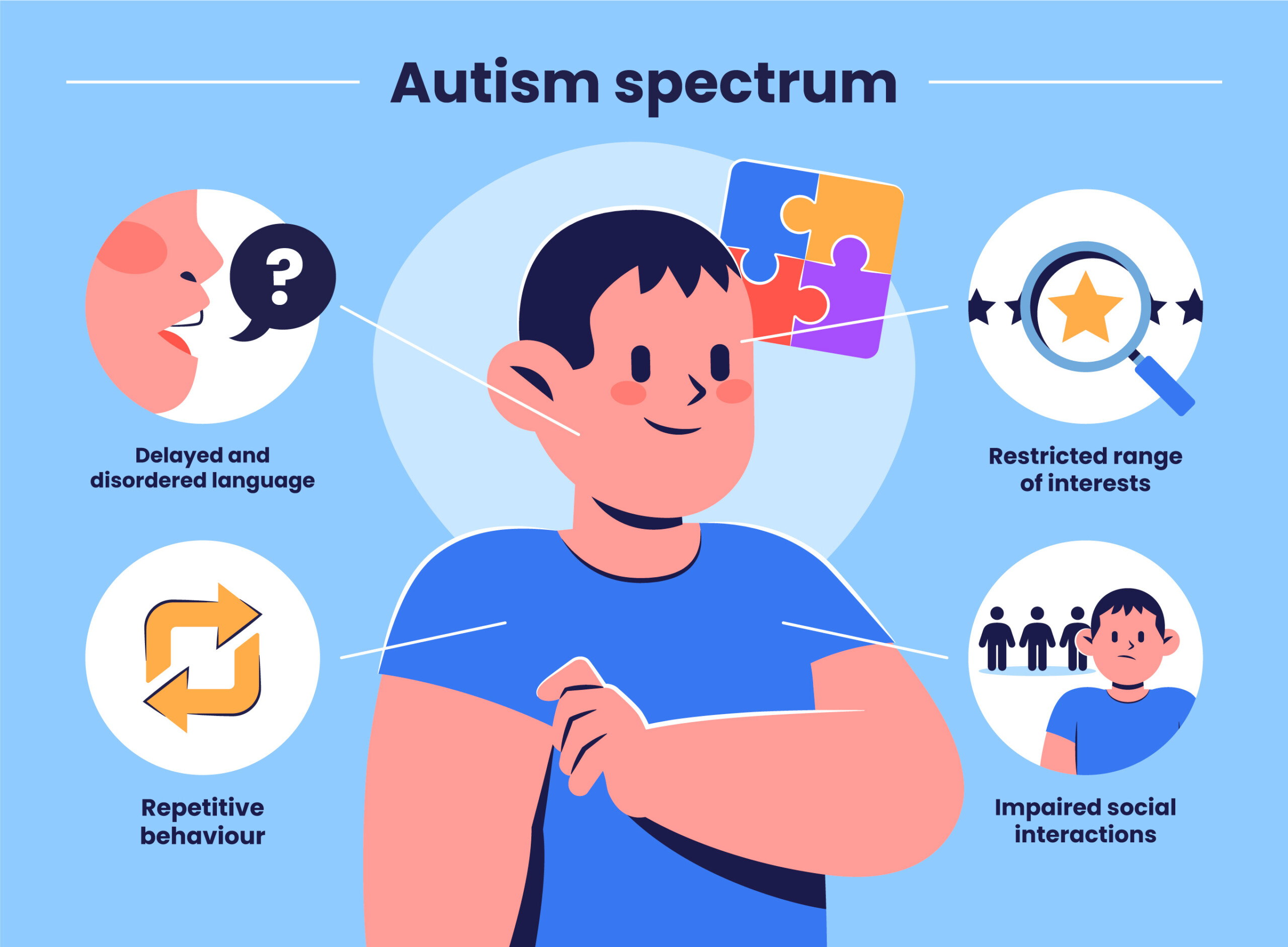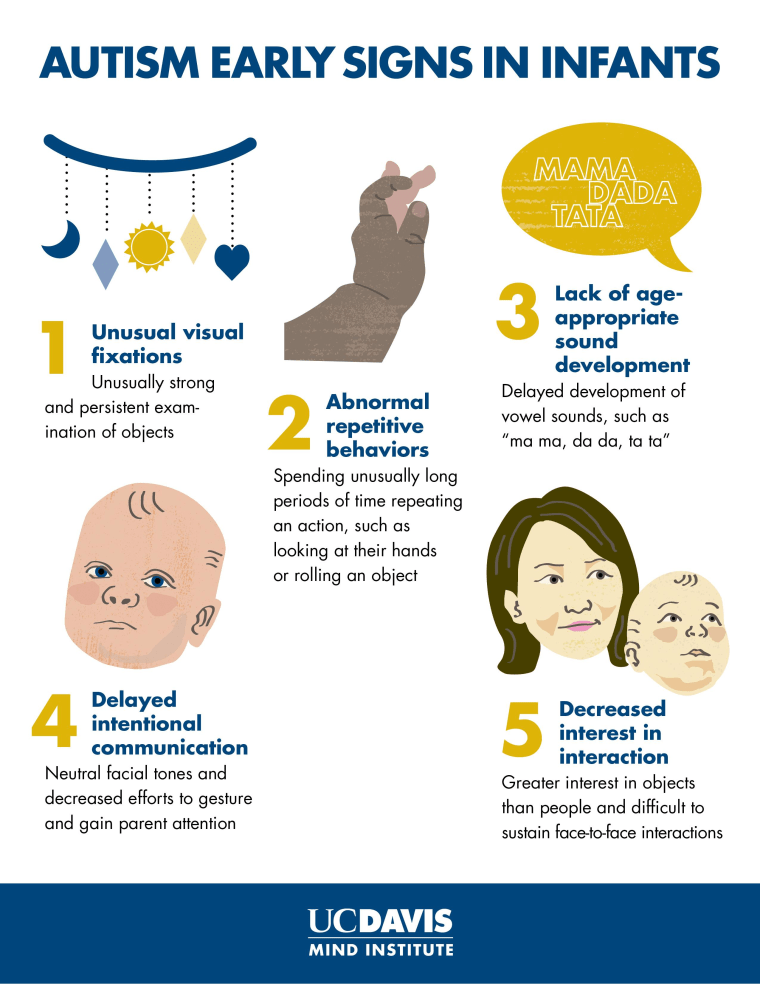Comprehending the Effect of Behavioral Autism on Daily Life and Social Interactions
You might not understand just how deeply behavioral autism affects every day life and social interactions. People on the spectrum usually browse a world loaded with communication hurdles and sensory overload. These difficulties can bring about disappointment and isolation, influencing their relationships and overall wellness. Understanding these nuances is vital for fostering encouraging settings. What strategies can we apply to create more comprehensive areas and purposeful links? The solutions could shock you.
Defining Behavioral Autism and Its Qualities
Behavioral autism, usually described as autism spectrum disorder (ASD), encompasses a series of problems characterized by challenges in social interaction, communication, and repetitive habits. You may notice that individuals with ASD frequently struggle to interpret social cues, which can bring about misunderstandings in discussions. They may discover it tough to develop eye call or engage in tiny talk, making social circumstances really feel frustrating.
Interaction problems can materialize in various methods, from postponed speech advancement to a preference for using less words. Recurring actions, such as hand-flapping or shaking, can work as coping devices to take care of anxiety or sensory overload. These attributes can exceptionally affect day-to-day live, making it necessary for you to comprehend and support those with ASD. By recognizing these qualities, you can promote an environment that advertises acceptance and motivates efficient communication, helping people with autism flourish in their daily communications.
The Spectrum of Autism: Recognizing Irregularity in Actions
Autism range disorder (ASD) isn't a one-size-fits-all medical diagnosis; it varies commonly among people. You might run into individuals who are very spoken and engage conveniently in conversations, while others could choose singular activities or connect non-verbally.
Furthermore, the means people with ASD respond to sensory input can differ substantially; some might be bewildered by loud noises or intense lights, whereas others flourish in promoting settings. The range likewise consists of distinctions in social communications; some individuals might battle to translate social hints, while others navigate social settings with relative convenience. Understanding this variability is crucial, as it aids you value each individual's unique experience and dressmaker assistance to their certain demands, cultivating an extra comprehensive environment for every person.
Interaction Obstacles Faced by Individuals With Autism
When you engage with people on the autism range, you may observe their distinct communication difficulties. They frequently deal with problems with both verbal and nonverbal cues, which can affect their social interactions. Recognizing these obstacles is essential for fostering much better connections and support.

Verbal Communication Troubles
Lots of individuals on the autism range experience spoken interaction problems that can considerably influence their day-to-day communications. You could locate it challenging to reveal your thoughts, sensations, or requires clearly. This can bring about stress for both you and those around you, as misunderstandings happen. You might struggle with starting conversations, keeping a subject, or recognizing subtleties in speech. Often, you might favor making use of straightforward language or repetitive phrases, which can restrict your ability to take part in deeper discussions. Your volume, pace, or tone may not straighten with social expectations, triggering others to misinterpret your intentions. Recognizing these difficulties can aid you and your support network develop strategies to enhance communication and cultivate far better connections with others in your daily life.
Nonverbal Communication Obstacles
Spoken communication isn't the only difficulty people on the autism range face; nonverbal interaction obstacles can be simply as considerable. These challenges can lead to misunderstandings or misconceptions of social hints, making communications really feel confusing or frustrating. By addressing nonverbal communication, you can find approaches to improve your social experiences and boost your overall high quality of life.
Social Communication Effects
Social communications can commonly really feel overwhelming as a result of the distinct communication difficulties faced by people with autism. You could fight with interpreting social cues, making it difficult to comprehend sarcasm or body movement. This can lead to misconceptions or unpleasant minutes in conversations. Additionally, starting and preserving discussions might really feel challenging, causing anxiousness in social situations. You may choose structured environments, making spontaneous interactions awkward. It's additionally usual to experience trouble in taking part in tiny talk, which can hinder developing new relationships. Acknowledging these difficulties can aid you find methods to boost interaction, such as practicing social skills in safe settings or using visual help - Autism Behavioral Therapy. Understanding your needs allows you to browse social interactions with better self-confidence and convenience.
Social Communication and Connection Structure in Autism
While building connections can be challenging for individuals with autism, understanding their unique perspectives and communication designs can foster purposeful links. You may discover that many individuals on the spectrum choose direct communication and may fight with social signs or little talk. By being straightforward in your interactions, you can assist create a setting where they feel comfortable.
Make the effort to observe and listen exactly how they express themselves. This insight can assist you in steering discussions much more efficiently. Taking part in shared passions can likewise function as a bridge to much deeper links. Whether it's a leisure activity, a favorite program, or a mutual passion, these usual strings can open up doors to relationship.
Day-to-day Live Routine: Navigating Approaches and obstacles
Steering day-to-day life regimens can be particularly challenging for people with autism, specifically when unanticipated changes happen. To browse these challenges, think about applying aesthetic timetables or lists.
Developing a regimen that consists of sensory breaks can additionally be valuable. You can intend time-outs throughout your day to recharge. It's important to interact with those around you, allowing them understand your preferences and needs. This assists create an understanding atmosphere.
Last but not least, practice mindfulness techniques to handle stress and anxiety and anxiousness. Basic breathing exercises or basing strategies can make a significant difference. By incorporating these techniques, you can boost your daily regimen and minimize interruptions, making life really feel much more workable.
Toughness and Capabilities of People on the Autism Range
Understanding day-to-day life routines is simply one facet of the autism experience. Numerous people on the autism spectrum possess exceptional staminas and capacities that establish them apart.
Furthermore, your memory skills usually beam, especially in locations of interest. Aba Therapist. This propensity for preserving information can make you a useful resource in areas like art, science, or technology. You might also show strong aesthetic thinking, allowing you to picture complex concepts and solve troubles artistically
In addition, your unique perspective on the globe can promote compassion and understanding in others, enhancing social communications. Accepting these toughness not just improves your self-confidence yet also assists others appreciate the diverse abilities you give the table.
Producing Comprehensive Atmospheres for Individuals With Autism
Producing inclusive environments for individuals with autism begins with developing sensory-friendly rooms that satisfy their distinct needs. You can likewise cultivate possibilities for social interaction, aiding to build friendships and links. By making these adjustments, you'll add to a more welcoming environment for everyone.
Designing Sensory-Friendly Spaces
While creating sensory-friendly rooms, it's important to assess the distinct demands of individuals with autism. see this website Begin by choosing calming shades and soft lights to produce a calming setting. When bewildered, include peaceful zones where individuals can retreat and reenergize. You'll wish to decrease loud sounds and disturbances, making use of soundproof materials or white noise makers to help maintain harmony. Consider responsive components like soft textiles or fidget-friendly objects that can offer comfort. Ascertain that spaces are adaptable, permitting very easy rearrangement to fit various tasks. Ultimately, include aesthetic timetables or clear signage to help individuals navigate the area with confidence. By attentively incorporating these aspects, you can produce an inviting ambience that supports sensory requirements and advertises general well-being.
Promoting Social Interaction Opportunities
Creating sensory-friendly spaces not just addresses individual convenience but additionally sets the phase for significant social interactions among people with autism. To promote these communications, develop comprehensive settings that invite involvement. Organize organized tasks, like art courses view it or team games, that urge partnership without overwhelming sensory input. Usage visual aids and clear interaction to aid everyone involve easily. Urge peer mentoring, pairing individuals with autism with supportive peers that can lead them with social scenarios. In addition, consider hosting normal area occasions that celebrate neurodiversity, fostering approval and understanding among all individuals. By applying these techniques, you can boost social chances, aiding people with autism develop friendships and enhance their social skills in a safe, inviting setting.

Often Asked Questions
Just How Can Pals Support A Person With Behavioral Autism?
You can support a good friend with behavior autism by holding your horses, listening actively, and respecting their borders. Take part in activities they delight in, communicate freely, and produce a comfortable atmosphere where they really feel valued and comprehended.
What Resources Are Available for Parents of Kid With Autism?
You can discover various sources for moms and dads of youngsters with autism, including support teams, academic websites, and local community services. Getting in touch with other moms and dads can also supply valuable understandings and shared experiences to aid browse obstacles.
Can Behavioral Autism Adjustment Gradually?

Yes, behavior autism can alter with time. You may discover shifts in interaction, social skills, and behavior as your youngster expands. Early treatment and assistance frequently play crucial duties in these developing adjustments.
Exactly How Do Sensory Sensitivities Impact Daily Life?
Sensory sensitivities can make day-to-day experiences frustrating. You might fight with loud noises or brilliant lights, causing tension or evasion. Locating environments that fit your needs can greatly boost your convenience and general every day life.
What Prevail Misconceptions Regarding Behavioral Autism?
You could assume behavior autism only impacts communication abilities, but it's more facility. Numerous presume people do not have empathy or intelligence, which isn't real. Understanding these mistaken beliefs helps foster approval and assistance for those on the spectrum.
Behavioral autism, usually referred to as autism spectrum disorder (ASD), imp source encompasses a range of conditions characterized by difficulties in social interaction, communication, and repeated behaviors.Social interactions can frequently really feel frustrating due to the distinct communication obstacles dealt with by individuals with autism.Designing sensory-friendly rooms not only addresses specific comfort but likewise establishes the phase for significant social communications amongst people with autism. Encourage peer mentoring, pairing people with autism with encouraging peers who can assist them via social situations. By executing these methods, you can enhance social chances, assisting individuals with autism develop friendships and strengthen their social skills in a secure, inviting atmosphere.
Comments on “Parent-approved list for working with Autism Spectrum Therapies”